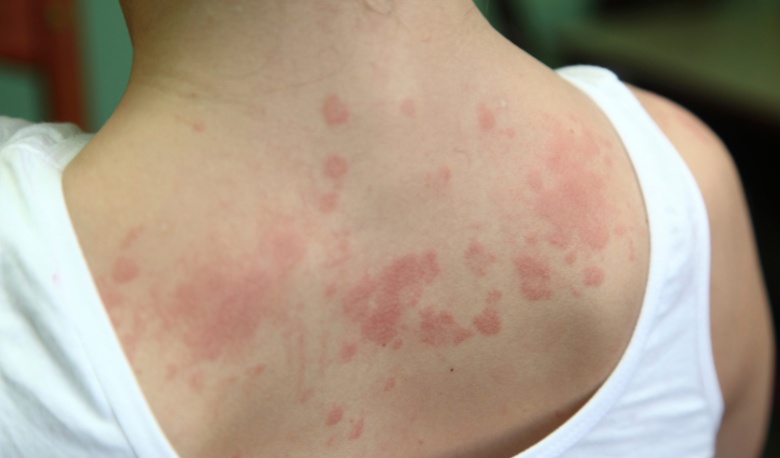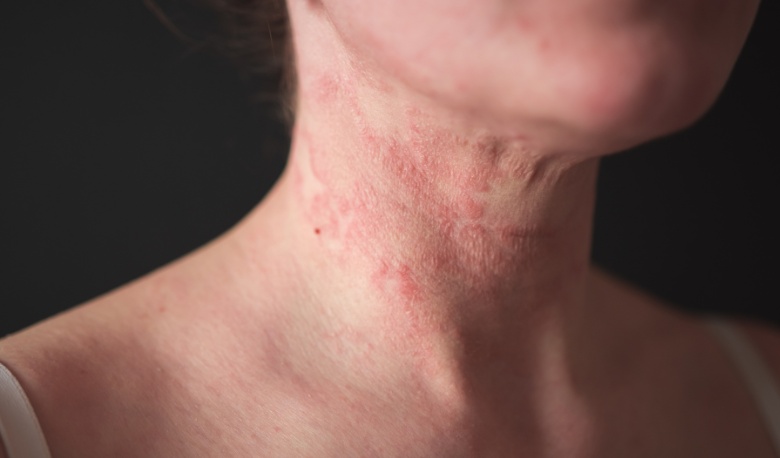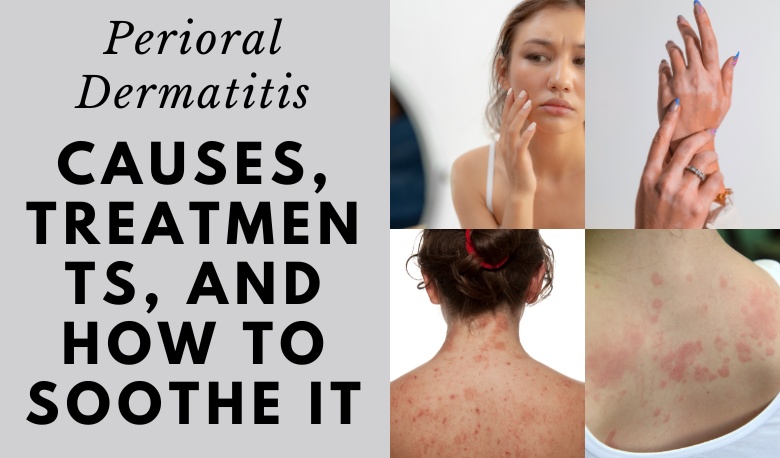If you’ve suddenly developed a red, bumpy rash around your mouth, nose, or eyes, you might be dealing with perioral dermatitis. This often frustrating skin condition can be a source of embarrassment and discomfort. But don’t worry – in most cases, it’s treatable.
In this article, we’ll dive into perioral dermatitis, covering:
- What exactly perioral dermatitis is
- Possible causes and triggers
- Effective treatment options
- Ways to soothe irritated skin
- Tips to prevent future flare-ups

What is Perioral Dermatitis?
Perioral dermatitis is a type of rash that appears as small red bumps around the mouth (“perioral” means around the mouth). It can also affect areas around the nose, eyes, and sometimes on the cheeks. The bumps might resemble acne or might be accompanied by itching, burning, or a feeling of tightness in the skin.
While not a serious condition, it can be persistent and often comes and goes in cycles. Perioral dermatitis primarily affects women between the ages of 20 and 45, but it can occur in men and children too.
What Causes Perioral Dermatitis?
The exact cause of perioral dermatitis remains somewhat unclear, but several potential triggers have been identified:
- Overuse of Topical Steroids: Prolonged use of topical steroid creams (like hydrocortisone) on the face is one of the leading suspects. It can even occur when stopping a steroid cream.
- Inhaled Steroid Use: Asthma inhalers or nasal sprays containing steroids may also be a contributing factor.
- Heavy Skin Products: Creams, moisturizers, or makeup that are particularly thick or greasy can clog pores and irritate the skin.
- Toothpaste: Fluoride in toothpaste, and sometimes certain flavorings, can trigger irritation and contribute to flare-ups.
- Hormonal Changes: Some women experience perioral dermatitis flare-ups during certain points of their menstrual cycle.
- Bacterial or Fungal Infections: There may be a link between perioral dermatitis and an imbalance of natural bacteria or yeast on the skin.

How is Perioral Dermatitis Treated?
The best treatment plan for your perioral dermatitis will be tailored by your doctor based on its severity and potential triggers. Common treatment approaches include:
“Zero Therapy”
Sometimes the first step in the treatment process is also the most challenging. This involves stopping the use of all topical steroids (even over-the-counter ones), thick creams and moisturizers, makeup, and fluorinated toothpaste. While initially uncomfortable, this “reset” often allows the skin to start healing on its own.
Topical Antibiotics
Your doctor may prescribe a topical medication to directly target inflammation at the source. Common antibiotics used for perioral dermatitis include metronidazole, erythromycin, or clindamycin. These come in the form of creams or gels for easy application.
Oral Antibiotics
For severe or persistent cases of perioral dermatitis, your doctor may prescribe an oral antibiotic. These medications work systemically to fight inflammation and potential infection throughout your body. Tetracycline and doxycycline are commonly prescribed for this purpose.
Other Medications
Less frequently, your doctor may consider other medications based on your individual needs. Antifungal medications might be used if a fungal infection is suspected to play a role. Pimecrolimus cream, a non-steroidal treatment for eczema, can sometimes be helpful in managing the inflammation associated with perioral dermatitis.

Soothing the Itch and Discomfort
While the rash heals, focus on soothing and protecting the irritated skin:
- Gentle Cleansing: Wash your face twice daily with a very mild cleanser and lukewarm water. Pat skin dry.
- Light Moisturizer: If your skin feels dry, use a fragrance-free and non-comedogenic (won’t clog pores) lightweight moisturizer.
- Sun Protection: Perioral dermatitis can worsen with sun exposure. Protect your skin with a gentle, mineral-based sunscreen.
Preventing Future Perioral Dermatitis Flare-Ups
After your skin has healed, proactive steps can help minimize the risk of your perioral dermatitis returning. Here’s what to focus on:
Keep Your Skincare Simple
A simple and gentle skincare routine is your best friend. Harsh cleansers, heavily fragranced products, and thick creams can all irritate your skin and increase the chances of a flare-up. Opt for mild, fragrance-free cleansers and lightweight moisturizers, especially ones designed for sensitive skin.
Switch Toothpaste
Fluoride in toothpaste is a common trigger for perioral dermatitis. Look for a fluoride-free toothpaste and be mindful of other potential irritants like strong flavorings. Several brands offer gentle toothpastes that still maintain good oral health.
Be Mindful of Steroids
If you use topical steroids for other skin conditions (like eczema) or inhaled steroids for conditions like asthma, talk to your doctor about possible alternatives or ways to minimize their use. Steroids, even in small amounts, can trigger perioral dermatitis flare-ups in susceptible individuals, so finding ways to manage other health conditions without them may be key to keeping your skin clear.
A Note of Patience
Healing from perioral dermatitis can take time. Be kind to yourself, follow your dermatologist’s guidance, and don’t hesitate to ask questions along the way.
Disclaimer: The information in this article is not a substitute for professional medical advice. Consult a dermatologist for proper diagnosis and a personalized treatment plan.

